Thyrsos
View All Tags
The thyrsos held both literal and symbolic meaning in ancient Greek religious practices. In rituals dedicated to Dionysus, followers would carry thyrsoi as part of their celebratory processions, marking their devotion to the god. The staff’s pinecone tip, often symbolizing the vitality of nature, was considered an emblem of fertility and life’s natural cycles. The thyrsos was also a tool used during Bacchic rites, where it was employed to channel the ecstatic energy of the participants, allowing them to lose themselves in the worship and abandon associated with Dionysian rituals. The staff acted as a kind of focal point, representing the ecstatic power that Dionysus could bestow upon his followers.
In addition to its connection to the divine, the thyrsos also served as a symbol of rebirth and the transformative power of nature. The staff, like Dionysus himself, was associated with both destruction and renewal. It was a reminder of the god’s dual nature: as a bringer of joy, festivity, and drunken revelry, but also as a deity who could lead to wild, untamed behaviors, breaking the constraints of reason and social order. This symbolic duality reflected the nature of Dionysian worship, where the boundaries between the rational and irrational, the civil and wild, were blurred.
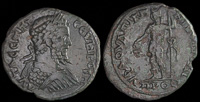
Dionysos Comarmond 193-211 CE
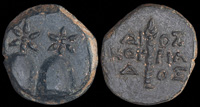
Dioscurias, Colchis 105-90 BCE
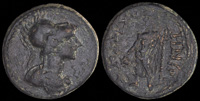
Kadoi, Phrygia 1st century BCE

Kanites 100 BCE
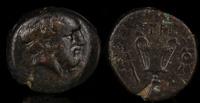
Ketriporis, Thrace 356-351 BCE

Koinon of Macedon 238-244 CE
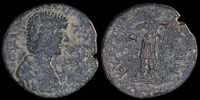
Kyparissia, Messenia 193-217 CE
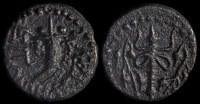
Mastaura, Lydia 100-0 BCE
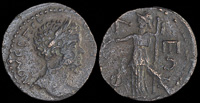
Phigalia, Arkadia 193-211 CE
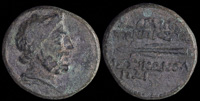
Seleukeia on the Issos 2nd-1st centuries BCE
